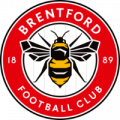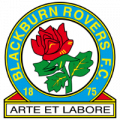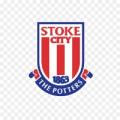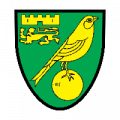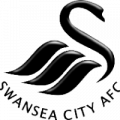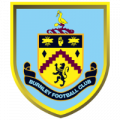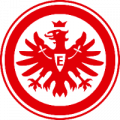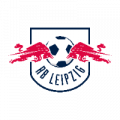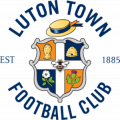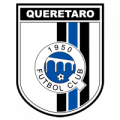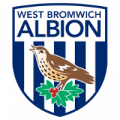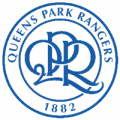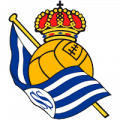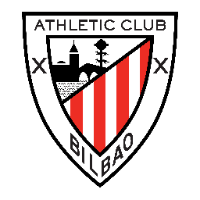
Athletic de Bilbao
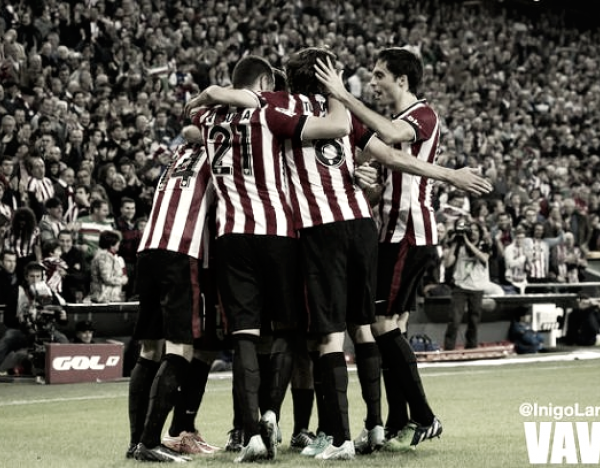
1897 Bilbao
Athletic Club is a soccer team from the city of Bilbao that plays in the Spanish League. Along with FC Barcelona and Real Madrid , it is another of the teams that have never been relegated to the Second Division of the championship, which is one of the reasons why it is considered a historic team at the national level, apart from its extensive track record and its great successes, especially in the early days of Spanish soccer.
This is how it all began
The beginnings of this historic club take us back to the year 1980. The fondness of the English who were in the ports of Biscay, made the Basques show a great attention to this great sport and it was then when in 1898, a group of young people from the Zamacois gymnasium of Bilbao took the initiative to found a soccer team, which they called Athletic Club. In those days, the lions played their matches in the fields of Lamiaco, located in the Biscayan town of Lejona.
In 1902, in a tournament known at the time as the Coronation Cup, Athletic together with Bilbao FC formed a team named Bizcaya and together they managed to beat FC Barcelona 2-1 to win the title. The following year, in the newly created competition, the Copa del Rey, Athletic was proclaimed champion, a trophy they would repeat the following year. These successes led a group of students living in Madrid to create what is known today as Atlético de Madrid, but in those years it was more of a branch. As it was a branch, the Madrilenians could not face Athletic in any match corresponding to an official competition. Even so, Athletic called up several players from Madrid for various Copa del Rey matches, but in 1921, with the philosophy by which the lions are known and the Athletic Club de Madrid's own crest, the Madrid team dissociated itself from the Bilbao team.
In 1911, due to the fact that the Lamiako field did not meet the requirements for playing big events, they decided to move to the field known as Jolaseta. In 1913, with the construction completed, they moved to play in the San Mamés fortress, which was inaugurated in a friendly match against Racing Club de Irún in which they ended up tying to one and with "Pichichi" opening the can in this new stadium. In the next three years, they lifted the Cup title on three consecutive occasions , a trophy they did not win again until 1921, the year in which "Pichichi" hung up his boots. Perhaps this record could have increased with the good form they were experiencing, but an institutional crisis prevented them from participating in the Cup editions corresponding to the years 1917, 1918 and 1919.
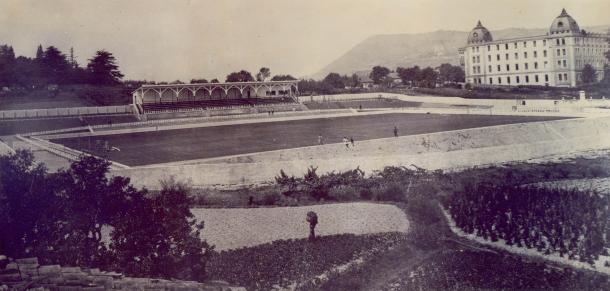
Years of pure glory
Little by little and by acquiring the services of great young Basque talents, the red and white trophies and titles arrived to the red and white trophy cabinets. One of the best moments the club experienced at that time was with the creation of the League championship. In the 1930s, the lions managed to win up to eight titles between Cup and League in only six years. It is worth mentioning the great squad they had with players with great potential such as Lafuente, Bata or Iraragorri, the first great historical striker of this club. In addition, there were matches that ended with results that will always remain engraved in the history of soccer, such as the famous 12-1 win over FC Barcelona, in which Bata managed to send the ball into the back of the net on seven occasions. The arrival of the Civil War forced the suspension of the League for three seasons, an event that put a stop to the great streak that the red and white team was on.
A new Athletic
After the conclusion of the national war and, consequently, the resumption of the league, the club rebuilt its squad thanks to its youth academy. Likewise, the team lost part of its previous squad that had generated so much success and the consequences of the civil war diminished the red and white team economically, sportingly and socially, as Franco eliminated the anglicisms and the club was renamed Atlético Bilbao.
In order to carry out the restructuring plan, the club started a campaign to look for players who stood out in other teams of the region, as well as values from the quarry. Therefore, at the beginning of the 1940s, the lions had in their ranks young players such as Lezama, Panizo, Iriondo, Zarra and Gainza, who a few years later would become red and white legends. All of them under the tutelage of Juan Urkizu, a former red and white player, who coached the team for most of the decade.
This period ended with the winning of a league title (1942-43) and three consecutive cup titles(1942-43 / 1943-44 / 1944-45) thanks, in part, to the offensive contribution of one of the most feared forwards of the time. Many red and white fans remember these five men by heart: Iriondo, Venancio, Panizo, Gainza and Zarra. Since their official debut in 1945 after Venancio 's arrival to the lions, this forward line coincided for 9 seasons and is considered to be Athletic Club's "second historic forward line" and one of the league's most productive. Telmo Zarrra, the best national striker of all time, deserves a special mention, as with 251 goals he is the national player with the highest scoring record and the third in the league, after Cristiano Ronaldo and Leo Messi.

The team of the eleven villagers
In the decade of the 50's, the Athletic model continued to grow and in its first years, the mythical red and white forward line continued to wreak havoc in all the national fields. Likewise, the team won the 1949-50 cup championship thanks to Jose Iragorri against Real Valladolid by 4 goals to 1. That match was marked by Telmo Zarra's four goals, which gave him the recognition of being the player who scored the most goals in a cup final.
At that time, it was not only the team that underwent changes. San Mames also joined in the reform and a new Main Stand was built, along with the construction of the arch, the club's hallmark. A work of such magnitude demonstrated the power of local engineering.
Once the glory was achieved, Athletic returned to a new reform process to continue with the triumphs. Thus, Ferdinand Daucik arrived in Bilbao, a Czechoslovakian coach from FC Barcelona, who was in charge of molding players such as Carmelo Cedrún, Garay, Canito, Arieta, Orue or Gainza, survivor of the previous team and captain of the team. Under Daucik, Athletic won its sixth league trophy ( 1955-56) and two cup trophies(1954-55 / 1955-56). As if that were not enough, the team competed for the first time in the European Cup in the 1956-57 season, winning the duels against FC Porto and Budapest Hunved, Hungarian. The lions, who did not lose a game until the quarterfinals, faced Robert "Bobby" Charlton' s Manchester United , with the tie against the English side ending 6-5 on aggregate, in favor of the "red devils", even though the Basque team won 5-3 at San Mames.
After Daucik's dismissal in 1957, Baltasar Albéniz took over for one season. His role in the league was unremarkable, unlike what happened in the cup, a feat that has gone down in the history of the club and the competition. In this way, the lions reached the 1958 cup final against Real Madrid. The Merengues were the current league and European champions and among their ranks stood out men like Gento, Di Stefano or Pereda. The match was held in Chamartín and Athletic emerged victorious thanks to goals by Arieta and Mauri.After this success, one of the club's greatest emblems, Piru Gainza, announced his retirement after 21 seasons in the red and white parish.
New generations make way
Decade after decade, the team has been reinventing itself, which is why one fact that marked the era was related to the youth academy. For this reason, the club decided to create a youth team and, years later, its second subsidiary team, the closest thing to the contemporary Bilbao Athletic. The quarry model continued to grow in the face of the arrival of foreign players to the national competition teams. In 1970, Athletic created Lezama to house the club's quarry, after the construction of teams in lower categories. These facilities were built in the Lezama municipality and laid the foundations of the team's philosophy from its birth to the present day.
Likewise, a new generation of players reached the first team, with one name standing out above all others. José Ángel Iribar, under the pseudonym of "txopo", transmitted seriousness and poise in each of his interventions. He arrived at Athletic from Baskonia and soon won the love and recognition of the San Mamés public. He was joined by players recognized in the club's history such as Canito, Orúe, Fidel Uriarte, Txetxu Rojo, Clemente, who managed to win two cup trophies in 1969 and 1973.
However, one of the events most remembered by the red and white fans took place in a European competition. After an unsuccessful decade of the 1960s, the 1970s were marked by the winning of the Cup in 1973 and the runner-up finish in the UEFA Cup against Juventus of Turin. This took place in the 1976-77 campaign where the lions reached third place in the league behind Barça and Atléico de Madrid, who were the champions. The team formed by Iribar, Villar, Irureta, Dani and Rojo, among others, managed to reach the UEFA final after defeating AC Milan, Barça and Belgian side RWD Molenbeek. In that final, the Italian team from Turin, Juventus, awaited them and won the title thanks to the double value of away goals. Athletic lost on their visit to Turin and at home, despite winning 2-1, it was not enough for them to come back and win the trophy.
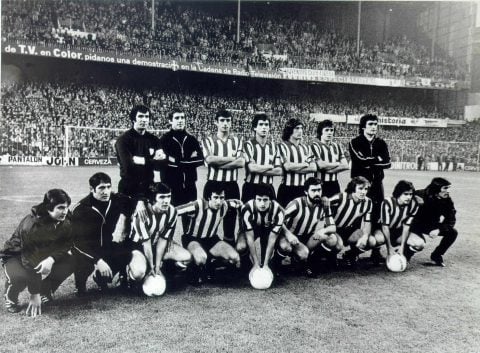
The Clemente era
Soccer was changing and the successes of the past were no longer so frequent in Athletic's life. After several seasons with no European presence, Athletic had to face complicated moments. Thus, in the 1981-82 campaign, Javier Clemente took over from Iñaki Sáez . The club, at this time, had to go through a period of change in all its aspects. Likewise, in 1982, the first elections to the presidency of the club were held, where more than 23,000 members voted in the ballot box and the winner was Pedro Aurtenetche, the first president elected by universal suffrage of the club. At the same time, on the occasion of the 1982 World Cup in Spain, San Mamés refurbished its facilities to improve access and increase its capacity.
For his part, Javier Clemente, a former player at the club, took over the reins of a young team, which he took charge of injecting his nuances to give it the winning gene. Thus, after a first season in which the team finished fourth, the following seasons 1982-83 and 1983-84 are the most memorable in the club's history. The first league title was won at the UD Las Palmas stadium after a 1-5 result in favor of the red and whites. It was a match with tense moments, as Athletic did not depend on themselves to win the trophy and were waiting for Real Madrid to slip up in Valencia. In Mestalla the result was a 1-1 draw and euphoria was unleashed in Gran Canaria. From that moment on, a symbol of success was born in Bilbao, La Gabarra. The players and coaching staff sailed the waters of the Bilbao estuary on a boat used to transport goods, which became known as the "Gabarra Athletic" (Athletic Barge).
The following season, Athletic Club disputed the European Cup where they beat Lech Poznań, Polish, and faced Liverpool in the round of 16. The English side won 1-0 at San Mamés thanks to a goal by Ian Rush and allowed them to advance in the competition to the title. That same season, Athletic achieved the doublethat had not been achieved since 1956, lifting the league and the cup trophy. Athletic defeated Real Sociedad at San Mamés with two goals from "Rocky" Liceranzu to win its eighth league title and thanks to a solitary goal from Endika , Athletic won the cup final against FC Barcelona, and a new celebration with the Athletic Gabarra gave rise to festivities in the Biscayan city. The club touched the sky with those years of glory.
.jpg)
The beginning of an end was established in the club, because despite continuing to compete as usual, the demands of the rivals were increasingly greater and Barça and Real Madrid began to duopolize the league championship. The following season (1984-85) Athletic obtained third place and was on the verge of winning its second consecutive cup, but Atlético de Madrid prevented it. This was compounded by the dismissal of Javier Clemente in 1986 and the retirement from soccer of one of its top stars, Dani Ruiz. The club entered into a dynamic of results that were difficult to manage and several coaches tried to remedy the situation in Bilbao. Faced with the obvious decline, the club hired Howard Kendall, a British coach from Everton, England. He left a great legacy among the Bilbainos, as he carried out a brief recovery of the team, achieving the qualification for the European Cup in 1987-88.
The centenary
The year 1990 arrived, and it was the first decade without titles in Athletic's history. President Lertxundi, in the 1992-93 season, decided to put an end to a transition of coaches that was not appropriate for a club like Athletic. Thus, the German Jupp Heynckes took over the team in that season in the nineties. With Heynckes as coach, together with a promising young player at the time, Julen Guerrero, the club achieved a 5th place finish, which gave them the right to play in the next UEFA Cup. Leaving aside the most beloved by the fans at that time asJulen, Ernesto Valverde, Cuco Ziganda, Xabier Eskurza or Aitor Karanka, among others, also stood out.
1994 was a year full of changes. José María Arrate replaced Lertxundi as president, and he brought in Jon Andoni Goikoetxea from FC Barcelona and Bittor Alkiza from Real Sociedad and, as coach, Javier Irureta, replacing Jupp Heynckes, who had decided before the elections not to continue at the club. That season, the red-and-white club lost in the round of 16 of the UEFA Cup to Parma. Later, Arrate dismissed Irureta midway through the season and replaced him with Amorrortu, and in the 1995-96 season the club achieved its worst league ranking in its history up to that point, finishing 15th.
In order to redress the situation, Athletic, in the 1996-97 season, hired coach Luis Fernández, and added players Imanol Etxeberria and Ismael Urzaiz to the squad, in addition to the signing of Joseba Etxeberria. Thanks to this, the Bilbao team changed the dynamic and managed to qualify for the UEFA Cup, finishing in 6th position.
The centerario season came with signings and a historic league position at the time. José María Arrate, the president, reinforced the team with Javi González, Mari Lacruz, Mikel Lasa, Txomin Nagore and the return of Rafael Alkorta and Patxi Ferreira. As a star signing, the club spent 2000 million pesetas (12 million euros) to sign defender Roberto Ríos; the most expensive signing so far in Athletic's history. They finished the season as runners-up in La Liga and qualified to play in the Champions League, although they did not advance beyond the group stage in the ongoing season.
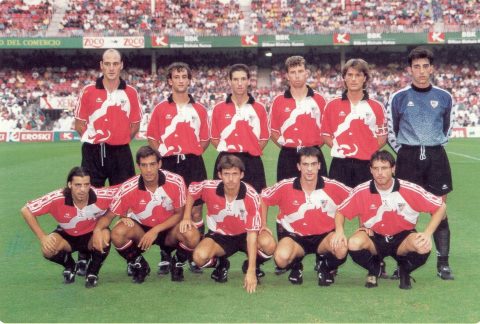
The crisis along with the transition
The club left the nineties behind and plunged into a new decade, one that left few successes and much suffering.At the beginning of the 2001-02 season, Athletic started with a new president in charge: Javier Uría, and a new coach: Jupp Heynckes, who was in his second cycle in the red and white dugout. That season, together with the new coach, the team played a very good game and produced good results. New players and the consolidation of others also helped the cause.
Heynckes ' cycle at the Basque club came to an end in the 2003-04 season, when he was replaced by Ernesto Valverde, a man of the club. In that season, the team reached fifth place and qualified for the UEFA Cup. In 2005, after a regular year, Valverde decided not to continue in charge of the red and white club due to disagreements with the board of directors at the time.
From then on, the team, both sportingly and institutionally, entered into a major crisis, which almost led to the team's historical relegation. After several player departures, the club opted to hire José Luis Mendilibar from S . D. Eibar in the second division. D. Eibar in the Second Division. But things did not go as expected, and after the second worst start to a league campaign in Athletic's history, he was removed from his post. That vacancy was filled by Clemente, already known at the club.
With Clemente in charge, the team's dynamics changed completely, and they achieved salvation on the penultimate matchday at Riazor. In the 2006-07 season, the board of directors put their trust in the coach of the reserve team, Félix Sarriugarte, but he was dismissed mid-season, as the team was in the relegation places. José Manuel Esnal "Mané", was chosen as the new coach. Athletic spent the whole season fighting for relegation, which they finally achieved on the last day of the league, in a decisive match against Levante U. D.
A breath of fresh air with Caparrós
2007 brought new elections, where the winner was Fernando García Macua. Fernando, in addition to players, brought Joaquín Caparrós as coach. With him and players of the stature of Fernando Llorente, Javi Martínez and Fernando Amorebieta, the team received a breath of fresh air. The club returned to the final of the Copa del Rey 24 years later, facing FC Barcelona and losing 1-4. In the following year's Supercopa de España they also faced the Catalans, losing once again.
From the 2009-10 season onwards, the team began a journey in search of its best version. Many young players took part in that objective, such as Iker Muniain, Óscar de Marcos, Mikel San José, Markel Susaeta or Ander Iturraspe, who gradually took their place in the starting eleven.
Bielsa and success
In the summer of 2011, elections were held for the presidency of the club, and Josu Urrutia emerged as the winner. With the change of president, there was also a change of coach, and Joaquín Caparrós was replaced by the Argentine Marcelo Bielsa.
Of all the coaching changes that the team has undergone in its history, Marcelo Bielsa 's was the most radical and changing. Although at the beginning the Argentinean's way of seeing soccer did not work out, little by little the results came. The 'lions' reached the final of the Cup and the Europa League, but they were not physically fit for either of the two matches and fell with a 3-0 defeat against Atletico Madrid in the Europa League, and the same outcome in the Cup final against FC Barcelona.
The 2012-13 season was marked more by player departures than by good play. Fernando Llorente and Javi Martínez decided to leave the club, including a controversy with Llorente, who refused to accept a contract offered by the club, claiming that he wanted more money. On the other hand, on Sunday, May 26, 2013, the last official match of the first team was played at the old San Mamés against Levante U. D., which ended with a victory for the visitors by 0-1. After the match, a simple act of homage to the stadium was held.
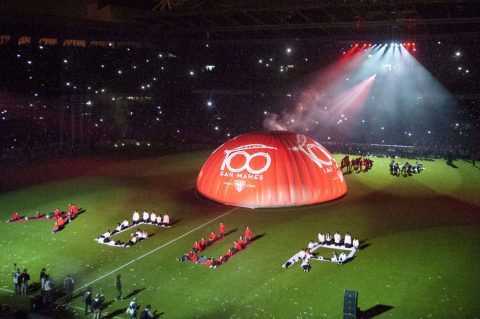
Valverde's return with a title
On September 16, 2013, already with Valverde on the bench, the first match was played at the new San Mamés stadium, a league match against R. C. Celta de Vigo that ended with the result of 3-2 in favor of the locals. During that league the team showed a good side, with a very regular game during all the matches. This allowed them to qualify for the Champions League by taking fourth place, with a total of 70 points. As for the Cup, the team did not reach the final this time; they lost in the quarterfinals to an unbeatable Atlético de Madrid .
In the 204-15 season, the team did not leave very good sensations in the League. In the Cup, Athletic reached another final three years later. They faced F. C. Barcelona for the third time, again losing 1-3.
In August 2015 they faced F. C. Barcelona for the title of the Supercopa de España thanks to their runner-up finish in the Copa and Barcelona being champions of both La Liga and the Copa. In the first leg, Athletic overwhelmed Barcelona 4-0 with three goals from Aduriz and one from San José from midfield, and in the second leg, they managed to hold on for a 1-1 draw, taking the title 31 years later.

On May 24, Kuko Ziganda became the new coach of the Bilbao team, following the departure of Ernesto Valverde to FC Barcelona. That decision brought nothing but misfortune to the red and white environment. The team went from fighting for Europe to the bottom of the standings. The team's play fell to unthinkable levels, which made the fans angry. The coach was questioned throughout the season, due to his poor results both in the league and in the Cup, where he was eliminated in the first round by S. D. Formentera, a team that was a team of the same name. D. Formentera, a Segunda B team. Finally, president Josu Urrutia announced that Jose Angel Ziganda would not continue in charge of the team next season.
The unsuccessful signing of Berizzo and the bid for Garitano.
On May 31, 2018, Eduardo Berizzo arrived at San Mamés as the new coach ahead of the 2018-19 season. The team started by winning their first league match against Leganés, but from then on, everything went from bad to worse. The Argentinian's slate did not work, and the board opted for Gaizka Garitano, coach of the reserve team, to turn the situation around.
The squad improved its performance significantly and, after defeating Celta Vigo away, managed to get out of the relegation places in the first week of 2019.After the end of the season, there were the departures of three historic players whom the club opted not to renewː Markel Susaeta left for Japanese side Gamba Osaka,138 while Ander Iturraspe and Mikel Rico joined RCD Espanyol and S. D. Huesca respectively.
The new season kicked off with a 1-0 win over Barça , with Aritz Aduriz scoring a stunning goal in the last minutes of the game. The joy was short-lived, as they gradually dropped to mid-table. Once there, they achieved good results in the Cup, where after eliminating F. C. Barcelona in the quarterfinals with a tight header by Iñaki Williams, they reached the semifinals of the tournament for the 52nd time in their history. In the semifinals, they had to face Granada in a double-header. After a heart-stopping match in Granada, the team finally qualified for the Cup final to face Real Sociedad, a clash never before seen in a final. A month before the final, the competitions were cancelled by UEFA, RFEF and La Liga due to an outbreak of Severe Acute Respiratory Syndrome Coronavirus-2, a global viral pandemic. As it was, it was postponed without a date pending an improvement in the situation.


